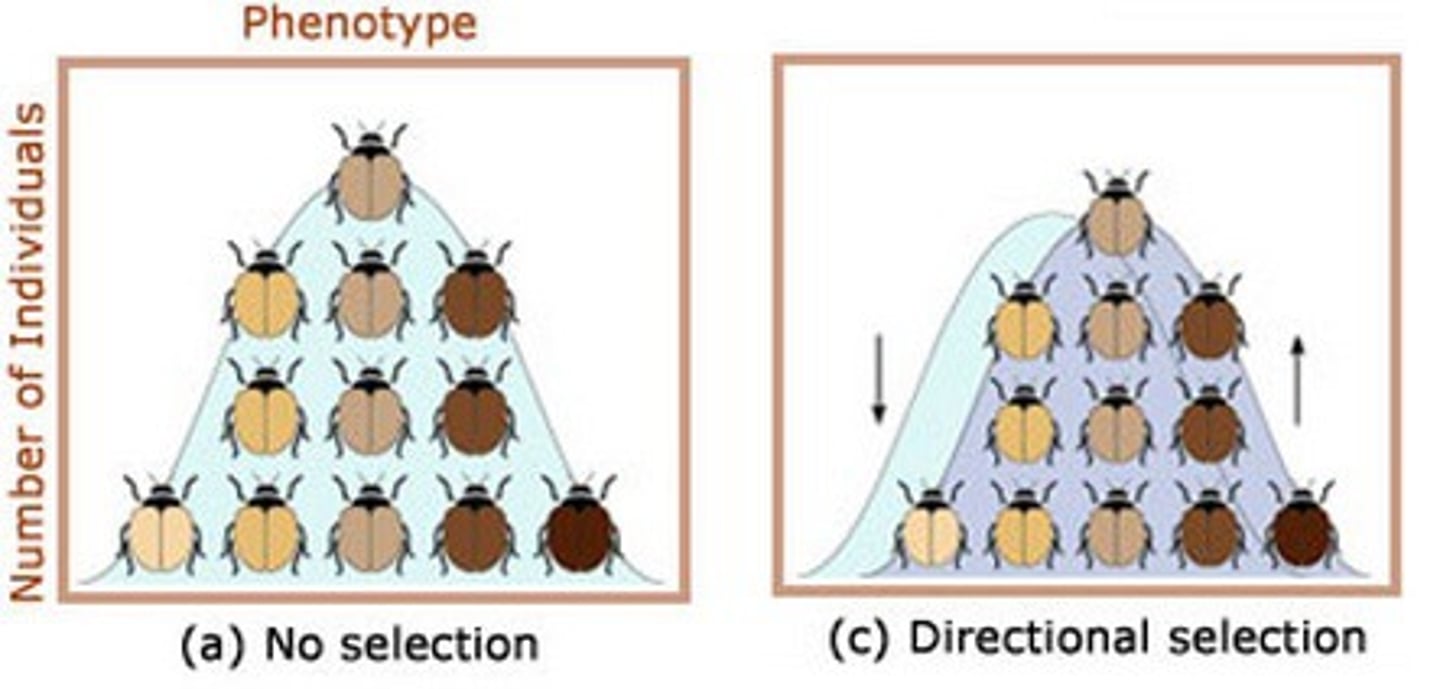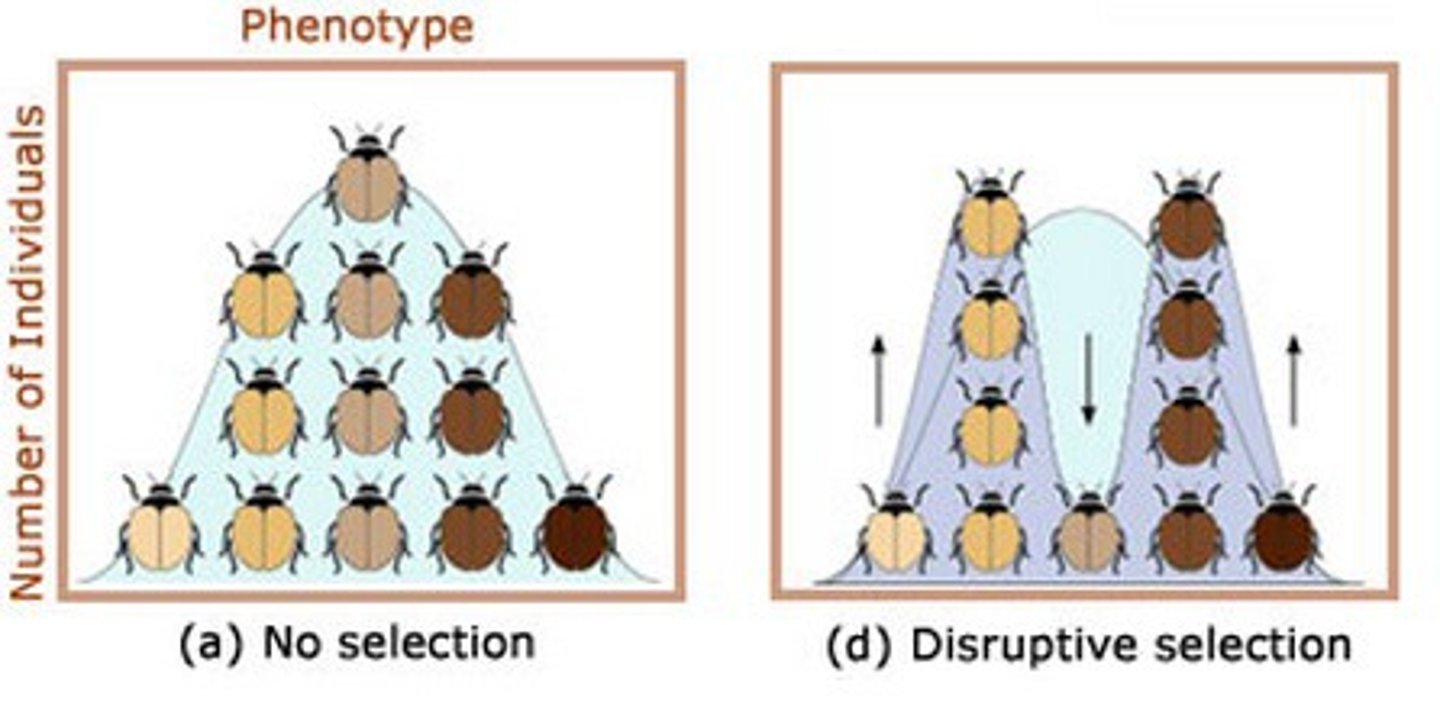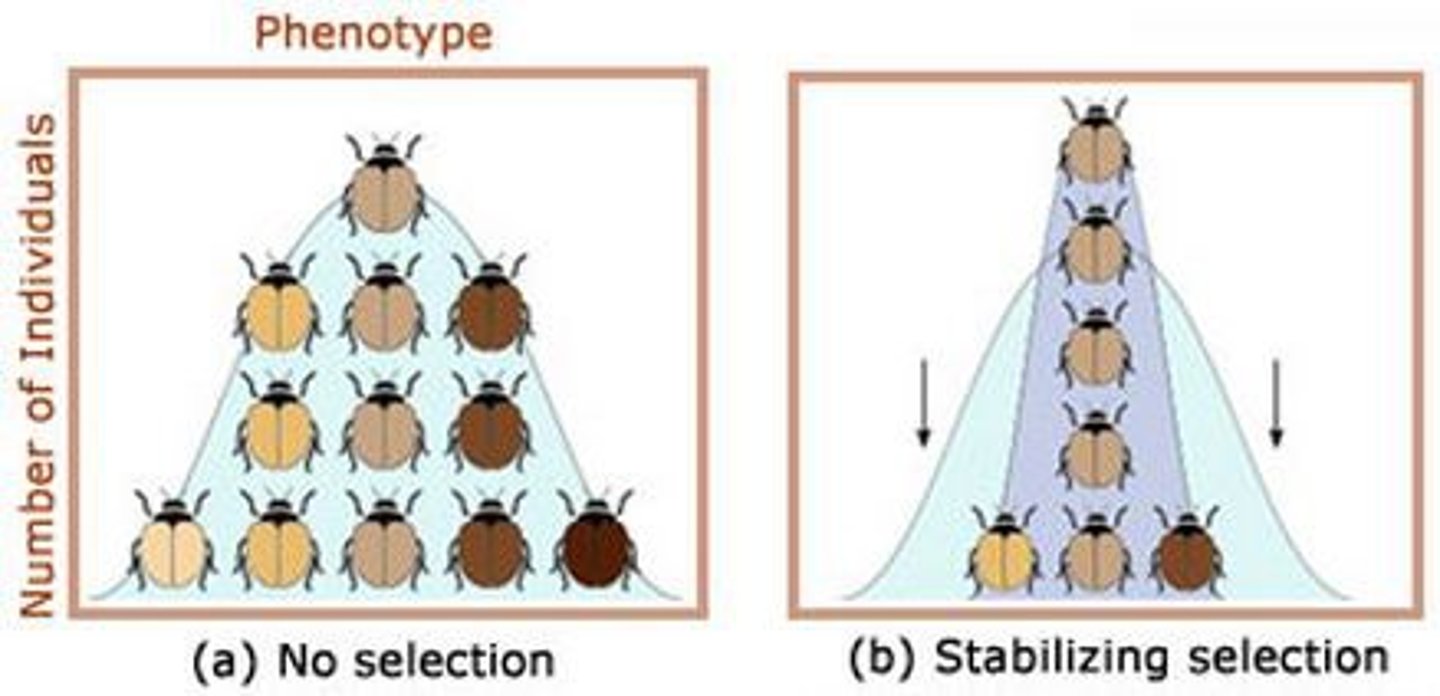bio - ch 8 quiz
1/26
There's no tags or description
Looks like no tags are added yet.
Name | Mastery | Learn | Test | Matching | Spaced |
|---|
No study sessions yet.
27 Terms
adaptive radiation
evolution from a common ancestor resulting in diverse species adapted to different environments
artificial selection
- a mechanism of microevolution
- microevolution can occur fast
- reduces genetic variability within a population
- can increase the frequency of harmful disorders
co-evolution
the process in which one species evolves in response to another
convergent evolution
distantly-related species that live in similar environments develops similar adaptations (analogous structures)
cumulative selection
the evolution of a simple structure into a more complex structure through a series of small adaptations ex. the eye in mammals
directional selection
individuals at one end of the phenotype range have a higher fitness than individuals near the middle or at the other end of the range

disruptive selection
takes place when individuals at the upper and lower ends of the range of phenotypes have higher fitness than individuals near the middle

gene flow
the exchange of genes with another population, occurs when fertile individuals migrate between populations. reduces genetic differences in populations. can usually mix neighbouring populations into a single population with a common gene pool
genetic drift
a change in the gene pool of a population due to chance
- smaller the population, larger the impact
bottleneck effect (genetic drift)
disasters like earthquakes drastically reduce the size of a population, also reducing the size of the gene pool
- some alleles may be more represented than others
- decreases genetic variation
founder effect (genetic drift)
the change in allele frequency relates to the genetic make up of the founders of a colony ex. human populations, like the amish have genetic diseases or traits commonly found within their population
gradualism
the evolution of species by gradual accumulation of small genetic changes over time
macroevolution
evolution over geologic time above the level of species, more dramatic biological changes ex. the evolution of tetrapods from aquatic vertebrates
microevolution
change in the allele frequencies within a population scale ex. shifts of phenotypes within species
mimicry
one species (the mimic) resembles another species (the model) in order to gain survival advantages ex. salamanders look like poisonous newts
post-reproductive barriers
- zygotic mortality (chromosomal incompatibility) ex, goat and sheep would not be viable)
- hybrid inviability (reduced fitness or early death) ex. tigers and leopards
- hybrid infertility (unsuccessful meiotic divisions) ex. horse and donkey --> mule <-- infertile
punctuated equilibrium
suggests that species often diverge in spurts of evolutionary change. long periods of little change are broken by shorter times of rapid selection
- natural selection and adaptation happens when a species is 'young'. by the time its distinctive features have evolved, the population is large enough to leave a fossil record
reproductive barriers
- ecological (ex. living in completely different habitats - water and land snakes)
- temporal (ex, breeding/blooming at different times - tulips and roses)
- behavioural (ex. distinct mating rituals attract specific mates - birds mating)
- mechanical (ex. part A must be compatible with part B - different sex organs that don't 'fit' together, like damsel flies)
- gametic (ex. gametes are incompatible - pollen from one flower can't fertilize another)
sexual selection
a form of natural selection in which individuals with certain traits are more likely to get a mate than others ex. peacocks with elaborate tails
speciation
the origin of new species (creates diversity)
stabilizing selection
individuals near the centre range of phenotype range have a higher fitness than individuals at either end of the range

allopatric speciation
speciation by geographic isolation - a species is split up physically and speciates into two different species
sympatric speciation
speciation by habitat isolation - exploiting a new niche may automatically reduce gene flow with individuals exploiting the other niche
hardy-weinburg equillibrium
frequencies of alleles in a gene pool are constant over time
1. must be random mating
2, large population
3. no movement in or out of the population
4. no mutations
5. no natural selection
sexual dimorphism
the stark contrasts between the phenotypes of females and males, which can be explained through sexual selection (ex. peacocks)
bateman's principle
sperm is cheap; eggs are rare
the operational sex ratio
the ratio of male to female individuals who are available for reproducing at any given time; females < males